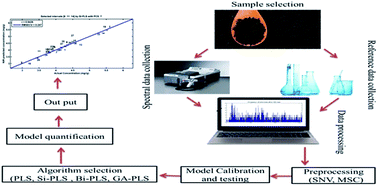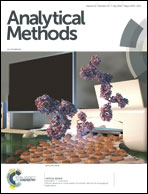Prediction of amino acids, caffeine, theaflavins and water extract in black tea using FT-NIR spectroscopy coupled chemometrics algorithms
Abstract
Fourier transform near-infrared spectroscopy (FT-NIRS), coupled with chemometrics techniques, was performed as a fast analysis technique to assess the quality of various components in black tea. Four PLS models, namely partial least square (PLS), synergy interval PLS (Si-PLS), genetic algorithm PLS (GA-PLS) and backward interval PLS (Bi-PLS), were established as calibration models for the quantitative prediction of amino acids, caffeine, theaflavins and water extract. The results are reported based on the lower root mean square error of cross prediction (RMSEP) and the root mean square error of cross-validation (RMSECV) as well as their correlation coefficient (R2) in the prediction set (RP) and the calibration set (RC). In addition, on the basis of fewer frequency variables, GA-PLS was found to be the best technique for the quantification of amino acids and water extract and Bi-PLS was found to be the best technique for the quantitative analysis of caffeine and theaflavins in this study. It was observed that NIR spectroscopy can be successfully combined with various chemometric techniques for the rapid identification of the chemical composition of black tea. This study demonstrates that FT-NIR spectroscopy, combined with chemometrics (GA-PLS and Bi-PLS), has the best stability and generalization performance for black tea analysis.



 Please wait while we load your content...
Please wait while we load your content...